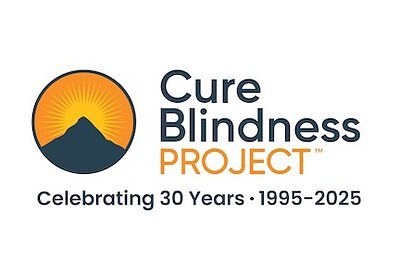
Beyond Sight: Charity Offers Gifts That Restore Vision, Boost Global Economies
This holiday season, a growing number of consumers are choosing gifts with a purpose. Cure Blindness Project offers a unique alternative – donations that restore sight and provide lasting economic benefits to communities in need.
Beyond Sight: Charity Offers Gifts That Restore Vision, Boost Global Economies
NEW YORK, NY – November 18, 2025
The Rise of ‘Gift Giving That Gives Back’
The holiday season is traditionally a time for material gifts, but a growing trend is shifting consumer priorities. Increasingly, shoppers are seeking opportunities to give back, opting for charitable donations in lieu of tangible presents. This year, Cure Blindness Project is tapping into this movement with its 2025 Holiday Gift Catalog, offering a range of donations supporting eye care initiatives across the globe. From funding cataract surgeries to training local ophthalmologists, the catalog provides consumers with a meaningful way to make a difference.
“We’re seeing a real appetite for gifts that have a lasting impact,” says a representative from Cure Blindness Project. “People want to know their money is going towards something truly worthwhile, and restoring sight is one of the most impactful things you can do.”
The charity isn’t alone in capitalizing on this trend. Numerous organizations now offer ‘gift catalogs’ featuring charitable donations. However, Cure Blindness Project differentiates itself by highlighting the quantifiable economic benefits of its work – a strategy resonating with increasingly socially conscious consumers.
The Economic Power of Restoring Vision
Beyond the humanitarian aspect, restoring vision has a significant economic ripple effect, particularly in low- and middle-income countries (LMICs). A recent report, “The Value of Vision,” published by the International Agency for the Prevention of Blindness (IAPB) in collaboration with the Seva Foundation and The Fred Hollows Foundation, reveals a compelling statistic: for every $1 invested in eye health, there’s a $28 return. This figure is based on a comprehensive analysis of 111 LMICs and considers factors like increased productivity, improved educational outcomes, and reduced healthcare costs.
“The economic impact is often overlooked,” explains a researcher involved in the IAPB report. “Blindness and visual impairment create significant barriers to employment and education. Restoring sight allows individuals to participate fully in the workforce and contribute to their communities.”
Cure Blindness Project applies this principle by not only providing eye care but also investing in sustainable solutions like training local healthcare professionals and building infrastructure. This creates long-term economic benefits for the communities it serves. The charity’s initiatives range from providing affordable cataract surgeries to establishing vision centers in underserved areas, empowering local communities to address their own eye health needs.
Thirty Years of Healing: A Legacy of Sight
Founded 30 years ago as the Himalayan Cataract Project, Cure Blindness Project has grown from a small initiative focused on Nepal to a global organization operating in over 30 countries across South Asia, sub-Saharan Africa, and South America. The organization has facilitated over 1.84 million sight-restoring surgeries and screened over 19.1 million people for eye diseases. The key to their success lies in a commitment to building sustainable, locally-driven programs. Instead of simply providing temporary relief, Cure Blindness Project focuses on strengthening local healthcare systems and empowering communities to address their own eye health needs.
“We’ve learned that the most effective way to address blindness is to work with local communities, not for them,” says a program director at Cure Blindness Project. “By training local healthcare professionals and providing them with the necessary resources, we can ensure that eye care is accessible and sustainable for generations to come.”
The organization’s impact extends beyond individual patients. By improving access to eye care, Cure Blindness Project helps to reduce poverty, improve educational outcomes, and promote economic growth. This holistic approach sets it apart from many other charitable organizations. Its recent acquisition of SightLife International further demonstrates a strategic focus on expanding its reach and impact, integrating expertise and resources to address a wider range of causes of blindness.
While many charities report aggregate numbers, Cure Blindness Project emphasizes transparency, maintaining a four-star rating from Charity Navigator for over a decade. Its commitment to accountability is evident in its publicly available annual reports and IRS Form 990s, detailing financial performance and program outcomes. This transparency builds trust with donors and demonstrates a commitment to maximizing impact. The organization's long-term sustainability is also bolstered by strategic partnerships with local governments, NGOs, and international organizations, amplifying its reach and influence. Its commitment to local capacity building extends beyond clinical training, including programs for health administrators and community health workers, ensuring a comprehensive approach to eye care provision.
This year’s Holiday Gift Catalog provides consumers with a variety of options, ranging from $25 to several hundred dollars, allowing them to support specific initiatives based on their budget and preferences. These initiatives range from providing eye exams for children to funding corneal transplants. By choosing a gift from the catalog, consumers can directly contribute to restoring sight and improving the lives of individuals in need.
📝 This article is still being updated
Are you a relevant expert who could contribute your opinion or insights to this article? We'd love to hear from you. We will give you full credit for your contribution.
Contribute Your Expertise →